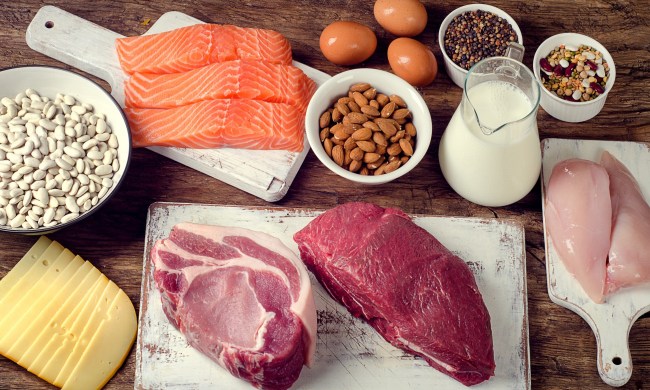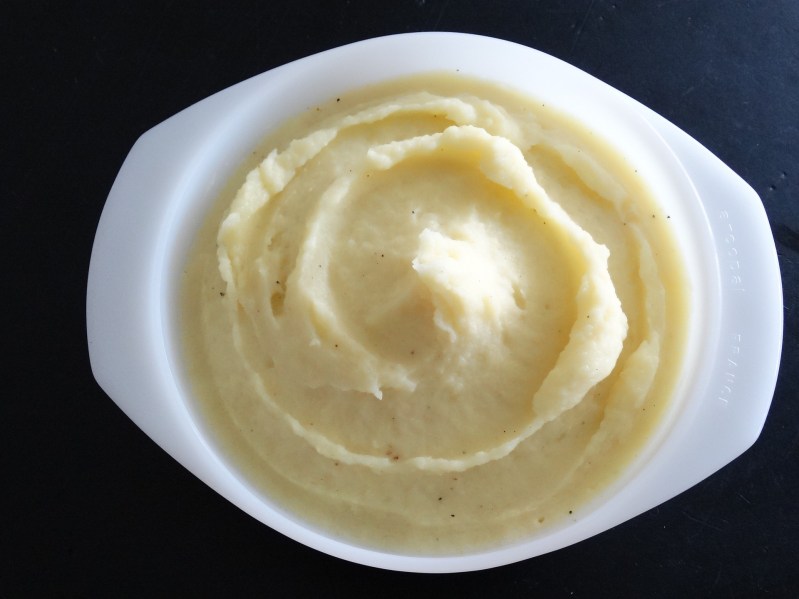
Everyone loves mashed potatoes. They’re every bit as much a staple of Thanksgiving dinner as turkey and cranberry sauce. We love their buttery, velvety texture and how they perfectly complement every one of our favorite Thanksgiving side dishes. But, maybe, just maybe – keeping in mind our genuine love for classic mashed potatoes – there’s still room for a bit of experimentation when it comes to Thanksgiving tradition this year. Because the truth is, there are many other vegetables that are equally (dare we say more so?) delicious as mashed russets or Yukon golds.
Each one of these mashed potato alternatives is very simple to make and can be enjoyed as they are or be treated as a base for any additional flavors you may want to add. Caramelized onions, sauteed mushrooms, fresh peas, or an assortment of fresh herbs make wonderful, flavorful additions to any of these recipes.
These are some of our favorite alternatives to traditional mashed potatoes.
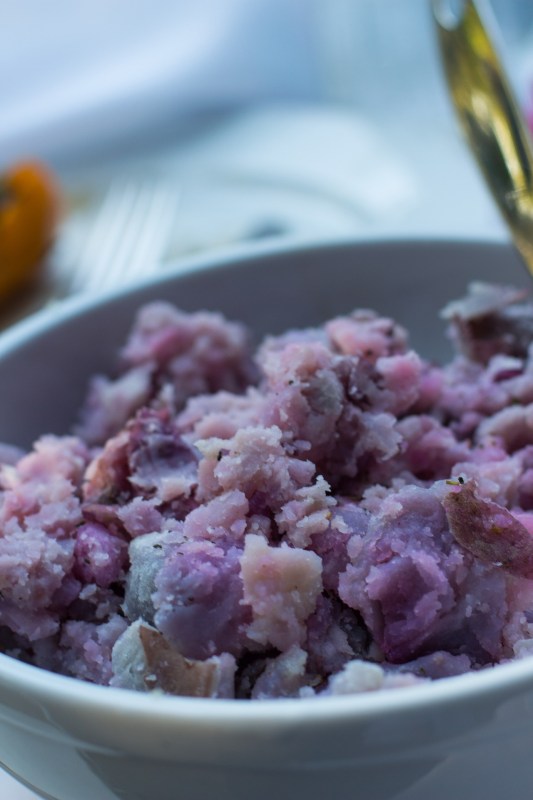
Purple mashed potatoes recipe
If you’re only looking to switch things up a little this year, purple mashed potatoes are a great way to go. They taste just like regular potatoes but are naturally colored in an extravagantly beautiful purple hue. Place a pile of these on your plate for all of the traditional taste, but with a gorgeous cosmetic upgrade.
Ingredients:
- 2 pounds purple potatoes, washed and diced
- 3/4 cup heavy cream, warmed
- 8 tablespoons butter, melted
- Salt and pepper to taste
Method:
- Place the potatoes in a large pot filled with salted water. Bring to a boil.
- Reduce heat to medium and cook until fork-tender, 12-15 minutes.
- Drain potatoes and return to the stove.
- Using a potato masher, mix in cream, butter, salt, and pepper, mashing to your desired consistency.
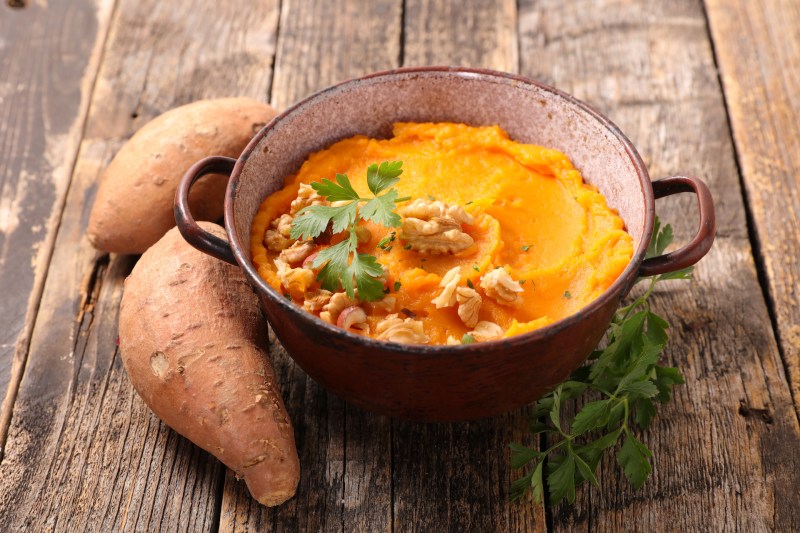
Mashed sweet potatoes recipe
Mashed sweet potatoes still feel like a traditional Thanksgiving side, even if it isn’t something that’s graced your table before. This is also a great way to combine two sides (mashed potatoes and candied sweet potatoes) into one deliciously simple dish.
Ingredients:
- 2 pounds sweet potatoes, peeled and cut into 2″ pieces
- 3/4 cup heavy cream, warmed
- 8 tablespoons butter, melted
- Salt and pepper to taste
- Dash of nutmeg
Method:
- Place the sweet potatoes in a large pot filled with salted water. Bring to a boil.
- Reduce heat to medium and cook until fork-tender, 12-15 minutes.
- Drain sweet potatoes and return to the stove.
- Using a potato masher, mix in cream, butter, nutmeg, salt, and pepper, mashing to your desired consistency.
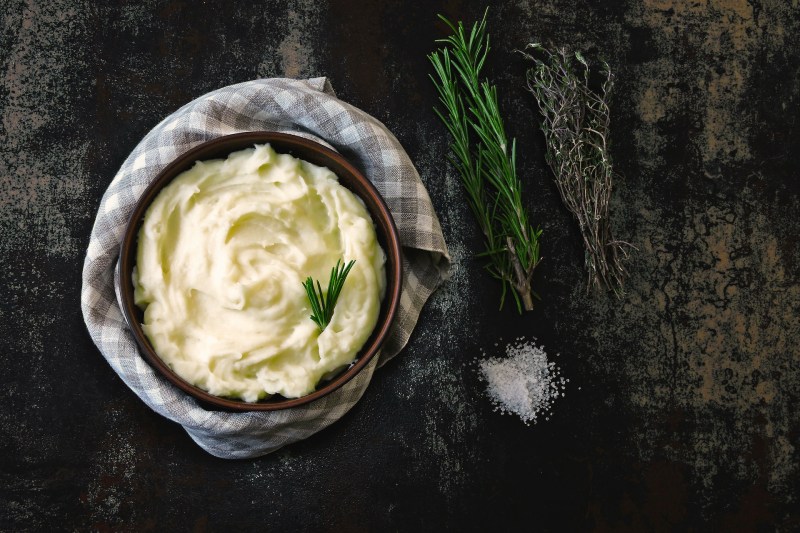
Mashed celery root recipe
If you haven’t cooked with celery root before, you may not be aware that underneath the completely hideous exterior of this root vegetable lies a softly savory, rich, and velvety interior that is delicious when cooked and mashed. Celery root is simply the root of the celery stalk, and it has a beautifully mild yet rich flavor that makes for an excellent alternative to mashed potatoes.
Ingredients:
- 2 pounds celery root, peeled and cut into 2″ pieces
- 3/4 cup heavy cream, warmed
- 8 tablespoons butter, melted
- Salt and pepper to taste
Method:
- Over medium/high heat, bring a large pot of salted water to a boil.
- Add celery root to water and boil until cooked through, about 25 to 30 minutes.
- Drain sweet potatoes and return to the stove.
- Using a potato masher, mix in cream, butter, salt, and pepper, mashing to your desired consistency.
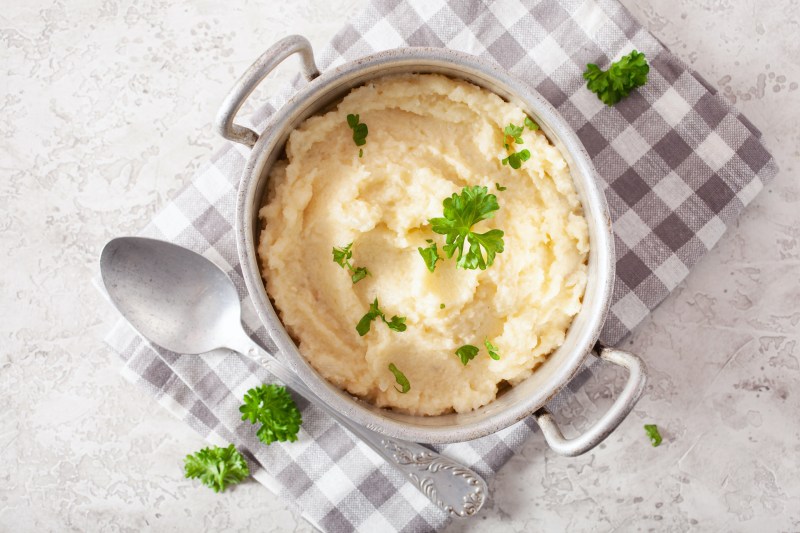
Mashed cauliflower recipe
In recent years, poor cauliflower has done more than its fair share of the culinary legwork. This once underestimated vegetable has now popularly been turned into rice, pizza crust, tater tots, and steaks. And while we do believe that cauliflower has earned a rest, this recipe is just truly delicious.
Ingredients:
- 1 large head cauliflower, cut into florets
- 4 tablespoons butter
- 4 tablespoons sour cream
- 4 garlic cloves, roughly chopped
- 1/4 cup parmesan cheese, grated
- Salt and pepper to taste
Method:
- Over medium/high heat, bring a large pot of salted water to a boil.
- Add cauliflower to water and boil until cooked through, about 8 to 10 minutes.
- Drain the cauliflower and return to the stove.
- Add garlic and butter to the cauliflower pot and saute until garlic is fragrant, about 1 minute.
- Add cauliflower and garlic to a food processor and process until smooth.
- Stir in parmesan cheese, sour cream, salt, and pepper.


